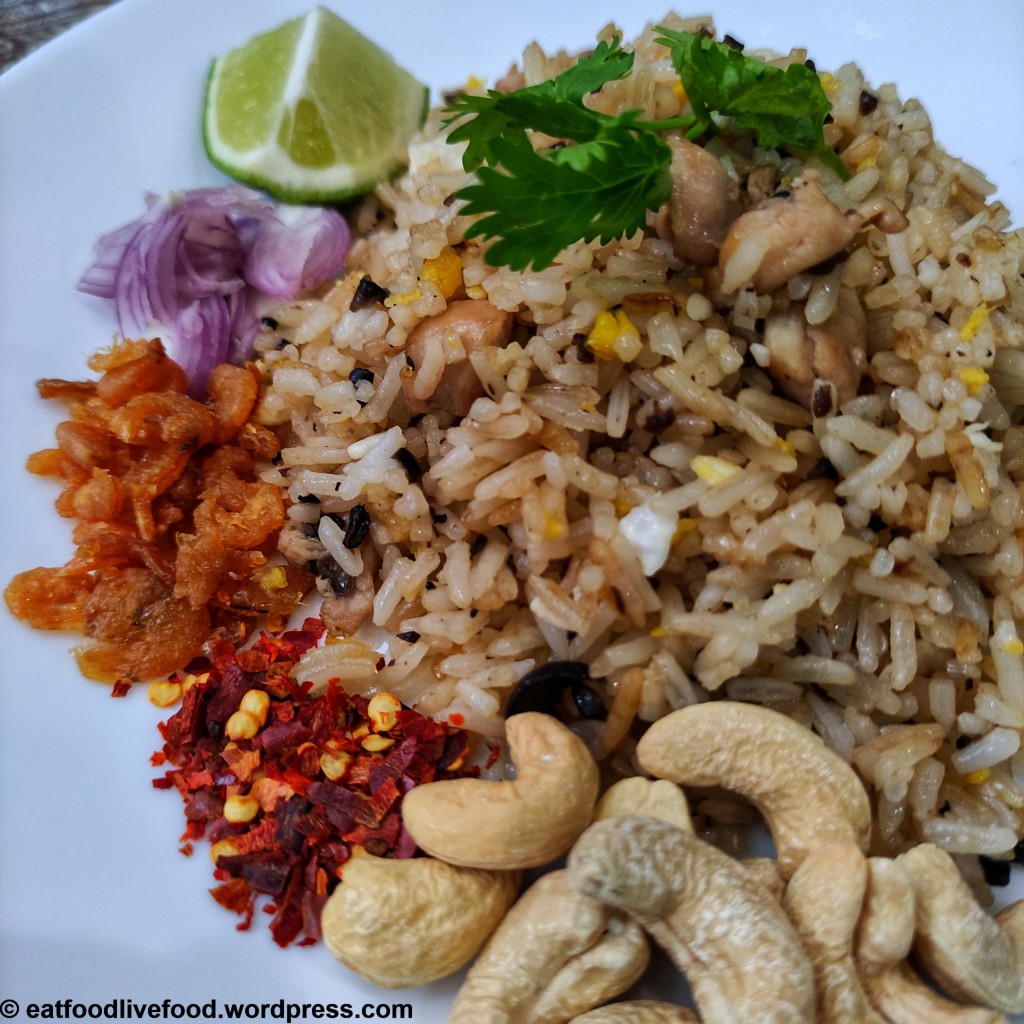
This was inspired by a Thai-Chinese hybrid fried rice dish. Made with ingredients and leftovers from the refrigerator and pantry, I readily and proudly exclaim that it is neither original nor “authentic”.
Leftovers present a challenge that I find myself always accepting; probably due to the natural human desire of consuming food for pleasure, coupled with a cook’s mentality of wanting to breathe a new lease of life into pieces of raw or cooked meats, scraps of vegetables, or whatever remnants that lurk in a nondescript reusable plastic container at the back of the refrigerator that may have once held the rank of “main dish” at the dining table from a previous mealtime.
The black olives used were from a can (the ubiquitous “western”/Mediterranean variety, as opposed to the Thai-Chinese black/salted olives which most recipes call for); the chilli flakes were from a small sachet courtesy of a not-so-recent pizza delivery order; cashews were from a half-consumed resealable bag; and the garnish of once-wilted coriander leaves from the depths of the refrigerator’s vegetable drawer were refreshed in ice cold water while everything else was being prepared. Rice, eggs, shallots, and dried shrimp are established staple ingredients in the household, so it was just a matter of putting things together and creating something out of seemingly nothing.
Necessity is the mother of invention, and I can probably thank my mother and her mother for thinking about food and leftovers that way as they survived having to “stretch” or fully utilise whatever was available or literally risked going hungry. For example; eggs – a luxury back then – were made into an omelette (two eggs had to feed up to 8 mouths). The said eggs were whipped till frothy while the oil in the wok came to temperature on the stovetop nearby. The beaten eggs would sizzle, puff up, and expand rapidly as soon as it came into contact with the scorching hot oil, and the satisfying aroma would fill the home; a sneak preview of something special and delicious await its inhabitants. Once glistening and golden brown, the omelette would then be equally divided among whoever was at the dining table (my mother, her siblings, and her parents), accompanied with a portion of steamed white rice and dashes of kicap lemak manis or colloquially known as kicap (Malay-style sweet soya sauce, a less thick version of its Indonesian counterpart).
This goes to show that you don’t necessarily need expensive ingredients to make good food. The challenge of making a dish or meal based on what is already available is a great way to learn, expand and evolve one’s culinary repertoire. Apart from that, the emotions evoked and subsequent memories that arise from the whole process (prepping, cooking, and eating) will remain permanently etched in one’s heart and mind forever.
Here’s to humble ingredients, good food, and good memories.